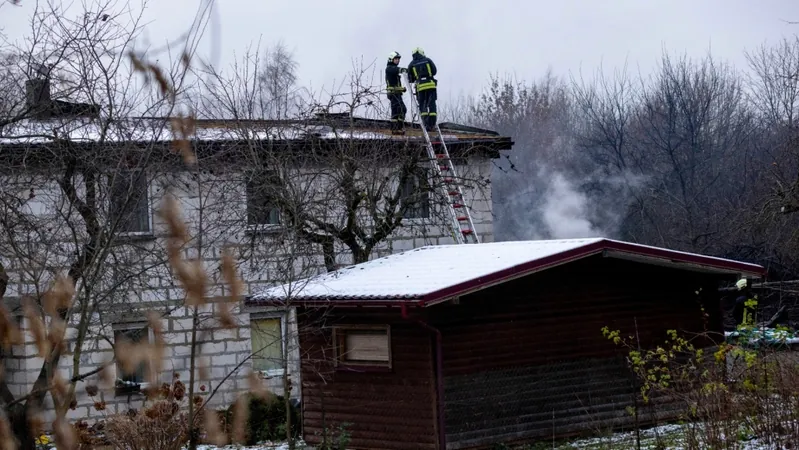
How to Unlock the Secrets of HIV Prevention: What Many Don’t Understand
2024-12-02
Author: Emma
HIV infections have seen a 39% decline globally from 2010 to 2023, but the fight against this devastating disease is far from over. In 2023 alone, a staggering 1.3 million people contracted HIV—more than triple the 370,000 target set by UNAIDS. Alarmingly, young women aged 15-24 in sub-Saharan Africa accounted for 27% of these new cases, emphasizing the urgent need for effective prevention strategies.
While there are numerous tools available to prevent HIV—such as oral pre-exposure prophylaxis (PrEP), condoms, vaginal rings, and long-acting injectables—the crux of the issue lies in user adoption. Understanding why some individuals choose to protect themselves while others don’t is key to advancing our prevention efforts.
Introducing the Decision Cascade: A New Framework for Understanding Choices
Public health researchers have developed a new insight into this decision-making process, called the "decision cascade." This model is rooted in behavioral science, recognizing that people's choices are influenced by their beliefs, experiences, and context.
The decision cascade breaks down the process into five critical steps:
1. Triggers and Cues
External prompts (like informational flyers) and internal feelings (such as anxiety about a recent encounter) can urge an individual to consider action. Yet, many current interventions rely excessively on health-related cues, often overlooking the more pressing concerns individuals face daily. The urgency of personal life stresses may overshadow health messages, even when they are clear and logical.
2. Reaction
After being triggered, immediate subconscious reactions can lead to dismissing the message. Common biases, such as thinking HIV only affects certain people or feeling invulnerable due to perceived health, can skew an individual’s response.
3. Evaluation of Action
This phase involves weighing the pros and cons of preventative actions. Personal beliefs and perceived risks can heavily influence decision-making. For instance, someone might forgo PrEP if they believe it would jeopardize important relationships.
4. Ability Assessment
Recognizing the viability of taking action is crucial. Potential barriers like confusion about accessing services or a lack of confidence can stop individuals from pursuing preventative measures.
5. Timing of Action
Finally, even if a person is convinced of the benefits of prevention, they might delay acting if it doesn’t seem urgent. Timing can be a major factor in whether they eventually take steps to protect themselves.
Crafting Effective Interventions: Solutions That Work
Understanding the decision cascade is essential for designing interventions that promote HIV prevention effectively. Here are some strategies that could make a substantial difference:
- Engaging Triggers
Use varied and enticing triggers to capture attention, appealing to diverse demographics.
- Positive Messaging
Emphasize constructive narratives to foster supportive reactions.
- Trustworthy Information
Provide reliable resources that clarify decisions, helping individuals understand the real costs and benefits of their actions.
- Practical Support
Enhance access to services by extending clinic hours or offering community-based programs tailored to young adults.
- Timely Encouragement
Reduce hesitations about taking action by integrating prevention services into individuals' existing goals, encouraging regular check-ups or preventive routines.
Adapting interventions to align with how people actually think and decide can lead to a powerful shift in the landscape of HIV prevention. When individuals feel supported throughout their decision-making process, they are far more likely to choose to protect themselves against this preventable disease. The time to take decisive action is now—by understanding the "why" behind behaviors, we can ultimately pave the way for healthier futures.









 Brasil (PT)
Brasil (PT)
 Canada (EN)
Canada (EN)
 Chile (ES)
Chile (ES)
 España (ES)
España (ES)
 France (FR)
France (FR)
 Hong Kong (EN)
Hong Kong (EN)
 Italia (IT)
Italia (IT)
 日本 (JA)
日本 (JA)
 Magyarország (HU)
Magyarország (HU)
 Norge (NO)
Norge (NO)
 Polska (PL)
Polska (PL)
 Schweiz (DE)
Schweiz (DE)
 Singapore (EN)
Singapore (EN)
 Sverige (SV)
Sverige (SV)
 Suomi (FI)
Suomi (FI)
 Türkiye (TR)
Türkiye (TR)